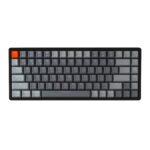Getting your new electric oven up and running can be exciting. You’re probably eager to start cooking delicious meals. But before you dive in there are a few important steps to take.
To use your electric oven for the first time remove all packaging clean the interior and accessories and run it empty at high heat for about an hour. This process burns off manufacturing residues and eliminates any odd smells. After cooling wipe down the inside with a damp cloth.
Once prepped your new oven will be ready for cooking. Start by learning the basic controls and features. Most electric ovens have settings for baking broiling and convection. Familiarize yourself with the temperature dial and timer functions. With a bit of practice you’ll soon be using your oven like a pro.
| Step | Action | Time |
|---|---|---|
| 1 | Remove packaging | 5-10 min |
| 2 | Clean interior/accessories | 15-20 min |
| 3 | Run empty at high heat | 60 min |
| 4 | Cool down | 30-60 min |
| 5 | Final wipe down | 5 min |
Preparing Your New Electric Oven
Getting your new electric oven ready involves a few key steps. These ensure safe operation and optimal performance from the start.
Inspecting Kitchen Appliances
Examine your new oven carefully upon delivery. Check for any dents or damage to the exterior. Open and close the oven door several times to test its function.
Inspect the power cord and plug for any bends or frays. Ensure all burners and heating elements are intact and properly seated.
Verify that you have all included accessories like racks and trays. Clean these items with warm, soapy water before first use.
Double-check that the oven fits properly in its designated space. Allow adequate clearance on all sides for ventilation.
Setting Up the Electric Oven
Remove all packaging materials from inside the oven cavity. This includes any protective films or tape.
Clean the oven interior with a damp cloth to remove manufacturing residues. Avoid harsh cleaners at this stage.
Preheat the empty oven to around 200°C (400°F) for about an hour. This process, called “burn-in,” eliminates odors and protective coatings.
Open windows during this initial heating to ventilate any fumes. The smell should dissipate after the first use.
| Step | Duration | Temperature |
|---|---|---|
| Remove packaging | 5-10 minutes | N/A |
| Clean interior | 10-15 minutes | N/A |
| Preheat (burn-in) | 60 minutes | 200°C (400°F) |
Understanding the Control Panel
Familiarize yourself with the oven’s control panel. Locate buttons for temperature settings, cooking modes, and timer functions.
Test each control to ensure proper operation. Refer to the user manual for detailed explanations of specific features.
Learn how to set the clock and timer. These functions are crucial for precise cooking times.
Understand the different cooking modes available. Common options include bake, broil, and convection settings.
Practice adjusting temperature settings. Know how to switch between Celsius and Fahrenheit if applicable.
Locate the light switch to illuminate the oven cavity. This helps monitor food without opening the door.
The Initial Use: Burn-In Process
The burn-in process is crucial when using an electric oven for the first time. This procedure eliminates manufacturing residues and ensures proper ventilation. Let’s explore these key steps to prepare your new oven for safe and effective use.
Removing Manufacturing Residue
New ovens often contain residual oils and chemicals from the manufacturing process. To remove these, set your oven to a high temperature between 400°F and 550°F (204°C to 288°C). Run it empty for 30-60 minutes. This high heat burns off any grease or residue left from production.
Remove racks and accessories before starting. Place them back in after the burn-in. Some ovens may produce smoke or odors during this process. This is normal and will decrease with time.
After cooling, wipe the interior with a damp cloth to remove any remaining residue.
Ensuring Proper Ventilation
Proper ventilation is essential during the burn-in process. Open windows and doors to allow fresh air circulation. If available, use your kitchen ventilation system or range hood. This helps remove smoke and odors produced during the burn-in.
Keep pets and children away from the kitchen area. The fumes can be strong and potentially harmful if inhaled in large amounts.
Consider running a fan to improve air circulation. This helps disperse any lingering odors more quickly.
| Burn-In Step | Duration | Temperature |
|---|---|---|
| Heat oven | 30-60 min | 400-550°F |
| Cool down | 1-2 hours | N/A |
| Final wipe | 5-10 min | Room temp |
After completing these steps, your oven is ready for its first use in cooking.
Operating Your Electric Oven
Electric ovens offer precise temperature control for cooking various dishes. Mastering the basic functions will help you achieve better results in the kitchen.
Preheating and Cooking Time
Preheating your electric oven is crucial for consistent cooking results. Set the desired temperature using the control panel or knobs. Most ovens take 10-15 minutes to preheat.
Wait for the preheat indicator light to turn off or listen for a beep before placing food inside. This ensures even cooking from the start.
Cooking times vary based on the dish and recipe. Use the recommended time as a guide but check food periodically. Factors like oven accuracy and food quantity can affect cooking duration.
Keep the oven door closed while cooking to maintain temperature. Opening it frequently can extend cooking time and waste energy.
Using Bake and Broil Functions
The bake function uses both top and bottom heating elements for even cooking. It’s ideal for cakes, cookies, and casseroles.
Broil activates only the top element for high-heat cooking. Use it for browning, melting cheese, or cooking thin cuts of meat.
Choose the right baking mode based on your recipe:
- Conventional bake: Standard setting for most dishes
- Convection bake: Circulates hot air for faster, more even cooking
- Bottom heat: Perfect for crispy pizza crusts
Adjust oven racks before preheating. For baking, use the middle rack. For broiling, place food closer to the top element.
Setting the Timer
Most electric ovens feature built-in timers. They help prevent overcooking and burning your food.
To use the timer:
- Press the timer button
- Set the desired cooking time
- Start the timer
Some ovens automatically shut off when the timer ends. Others just beep as an alert.
For longer cooking times, use both the oven timer and a separate kitchen timer as a backup.
Remember, timers don’t control oven temperature. You’ll need to turn the oven off manually when cooking is complete.
| Function | Best For | Temperature Range |
|---|---|---|
| Bake | Cakes, breads, casseroles | 300°F – 450°F |
| Broil | Steaks, fish, toasting | 450°F – 550°F |
| Roast | Whole chickens, large cuts of meat | 325°F – 400°F |
Maintenance and Cleaning
Proper maintenance and cleaning are crucial for your electric oven’s longevity and performance. Regular upkeep ensures safe operation and consistent cooking results.
Regular Cleaning
Clean your oven after each use to prevent buildup. Wipe spills immediately with a damp cloth. For stubborn stains, use a mixture of baking soda and water. Apply the paste and let it sit overnight. Wipe clean with a damp cloth in the morning.
Clean the oven door glass with a non-abrasive cleaner. Use a soft sponge to avoid scratches. Don’t forget to clean the oven racks. Soak them in soapy water for easier cleaning.
Check and clean the oven seal regularly. A clean seal prevents heat loss and improves efficiency. Vacuum around the oven to remove crumbs and debris.
Utilizing Self-Cleaning Feature
Many modern electric ovens have a self-cleaning feature. This function heats the oven to very high temperatures, burning off food residue. Before using this feature, remove the racks and any loose debris.
Ensure good ventilation when using the self-clean mode. Open windows and turn on fans. The process can take 2-4 hours. Let the oven cool completely before wiping out the ash with a damp cloth.
Use the self-cleaning feature sparingly. Excessive use can wear out oven components. For light cleaning between deep cleans, use the steam clean function if available.
| Cleaning Method | Frequency | Time Required | Notes |
|---|---|---|---|
| Regular Wipe | After each use | 5-10 minutes | Prevents buildup |
| Deep Clean | Monthly | 1-2 hours | Use baking soda paste |
| Self-Clean | Every 3-6 months | 2-4 hours | Requires ventilation |
Frequently Asked Questions
Using an electric oven for the first time can be straightforward with the right guidance. Here are answers to common questions about initial setup, baking tips, and safe operation.
What are the initial steps to follow when using an electric oven for the first time?
Before using your new electric oven, remove all accessories and clean them with soapy water. Wipe down the interior with a damp cloth.
Preheat the oven to about 200°C (400°F) and let it run empty for an hour. This burns off manufacturing residues.
Allow the oven to cool completely before wiping it down again.
How should an electric oven be set up for baking purposes?
For baking, preheat the oven to the recipe’s specified temperature. Use oven-safe bakeware and place it in the center of the oven.
Ensure racks are positioned correctly for your baked goods. For even browning, rotate pans halfway through baking time.
What guidelines must be adhered to when operating an electric oven for cooking?
Always use oven mitts when handling hot dishes or racks. Open the oven door carefully to avoid burns from escaping steam.
Keep the oven door closed while cooking to maintain temperature. Use the oven light to check progress instead of opening the door frequently.
Clean spills promptly to prevent burning and odors.
Are there specific instructions for baking cakes in an electric oven?
Preheat the oven and prepare your cake batter as directed. Grease and flour pans or use parchment paper.
Place cake pans in the center of the oven. Avoid opening the door during the first half of baking time.
Test for doneness with a toothpick inserted into the center. It should come out clean when the cake is ready.
What precautions should be taken while using a touch screen electric stove?
Keep the touch screen clean and dry to ensure accurate responses. Use only your fingertips to operate the controls.
Lock the touch screen when not in use to prevent accidental changes to settings.
Avoid placing hot items on or near the touch screen to prevent damage.
How can you correctly set temperatures and times on a new electric oven?
Locate the temperature and timer controls on your oven’s panel. Set the temperature first, then the cooking time if using a timer function.
Use the up and down arrows or dial to adjust settings. Press start or enter to confirm your selections.
| Function | How to Set |
|---|---|
| Temperature | Use arrows or dial to select desired temperature |
| Timer | Set cooking duration using number pad or dial |
| Start | Press start button to begin preheating and cooking |
Double-check your settings before starting the oven to ensure accuracy.







